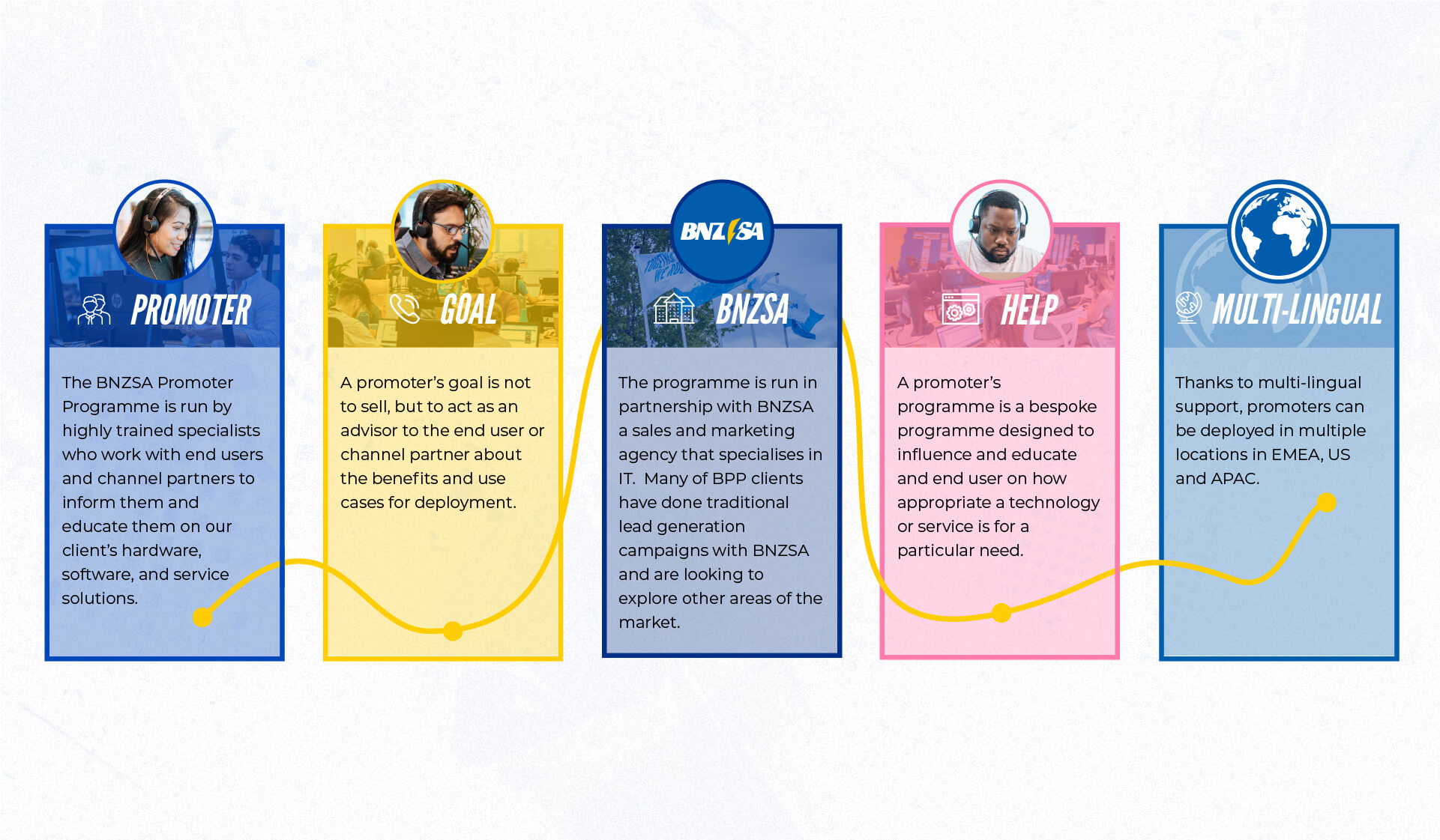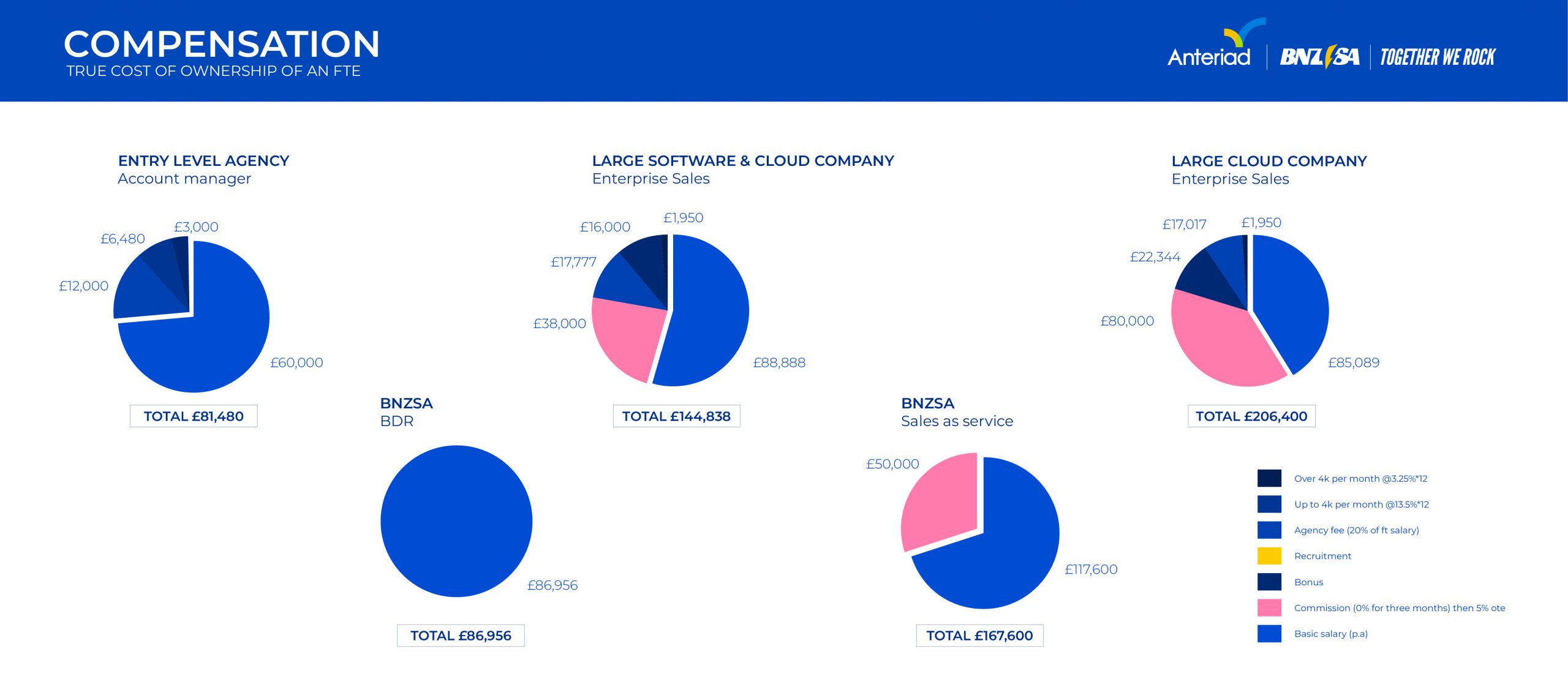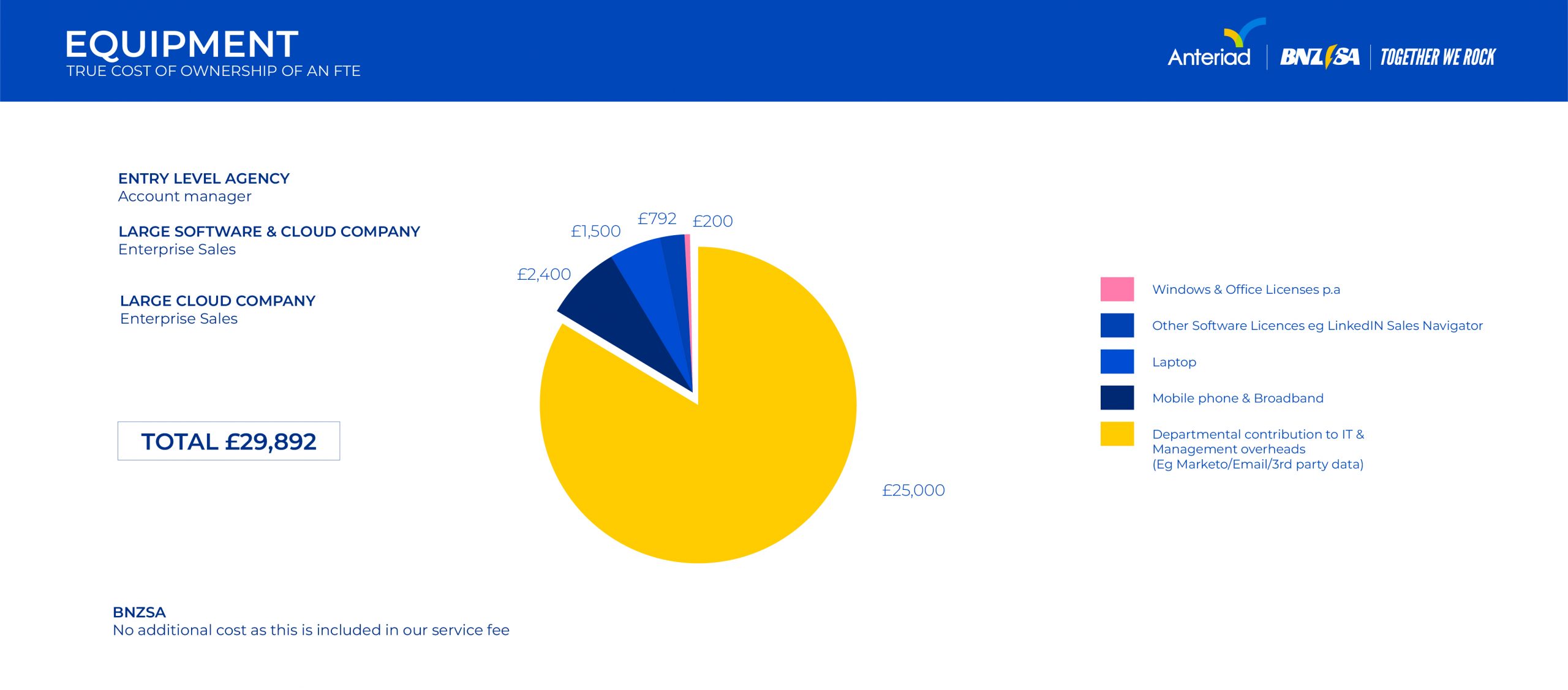Opportunity Finder gets a Promotion - Introducing the BNZSA Promoter Programme
The latest service offering available from BNZSA’s Opportunity Finder end-to-end revenue framework.
Against a backdrop of recession, inflation, and staffing cutbacks, if a company could approach you and offer you the chance to continue to grow your business well above the market average and in double digits, what would you say?
“Impossible?” “Very unlikely?” Or “Are you finally giving me those Glengarry[1] leads?”
Well, it’s not just closers who get the coffee under the BNZSA Promoter Programme, (BPP) it’s the entire company, because BNZSA Promoters mean business!
What is the BNZSA Promoter Programme?
The B2B equivalent of Internet ‘influencers,’ BNZSA’s Promoter Programme is a service that fits under the umbrella of its Opportunity Finder Framework and run by highly trained specialists who work with end users and channel partners to inform them and educate them about a client’s hardware, software, platform and service solutions.
These promoters are multilingual and can serve multiple markets, so are ideally placed to help companies that are looking to land and expand in new territories quickly and effectively without the need to hire full-time staff or set up offices.
They also work with our client’s channel partners. The strategy here is to drive scale of adoption and proactive selling through training and co-selling. The programme is closely aligned with BNZSA’s traditional marketing campaigns.
Reach parts of the market other programmes cannot reach!
The differentiator for the BPP is that it’s designed to reach the parts of the market not covered by the client’s direct or BNZSA’s direct sales teams and is agile like a special forces unit that can react to quickly to changing field conditions, like tactical moves by competitors.
BNZSA's diverse, international team with 26 languages spoken natively supports global coverage depending on the clients needs and priorities. We currently offer this service across EMEA, US and APAC markets, with coverage in the Middle East, Africa, and countries such as Canada, Japan, Australia, and India.
The goal of the programme is to increase unit volume sales of a product or increase adoption of client services directly and indirectly. The primary focus of the BPP is on the mid-market and public sector, areas which are not covered by the enterprise sales teams.
The target audience for BPPs are: ITDMs, Value Added Resellers (VAR), Systems Integrators (SI), Managed Service Providers (MSP), Original Equipment Manufacturers (OEMs) and Local OEM’s.

Promoter Responsibilities
The key responsibilities of a BNZSA Promoter are:ç
- Familiarity with a client’s product roadmap, messaging & latest internal promotions.
- Advocacy to vendor partners for selling products, services, or TAM expansion where supply is feasible.
- Focus on developing and delivering against the market opportunity and educating on related technologies.
- Generate and follow up on end customers leads with a view to sell. This will include product training and demos as well as long-term follow-up with each prospect.
- Develop relationships by making visits / phone assessments, provide product updates, problem identification and resolutions.
- Should face-to-face contact prove impractical, virtual via MSFT Teams/Zoom/Google Hangouts will be suggested.
- BNZSA Lead gen agents will work alongside the promoters to help deliver leads to assist with co-selling. However, promoters are also expected to generate their own end customer leads through their own business development initiatives.
- Regular customer visits onsite ensuring regular face to face (FTF) contact, with ongoing support via phone/email as required.
- Liaising with BPP counterparts to ensure all leads are successfully loaded and tracked into the client’s CRM system.
- Internal Service Level Agreement to respond in a timely manner to requests from the central BNZSA team.
- Maximize support and advocacy by organising and delivering training for partners.
- Attend and participate in partner activities, including, but not limited to, product launches, events, and roadshows.
- Supporting the existing account management team in meeting agreed KPIs and individual account objectives outlined in business plans.
- Working in tandem with EMEA technical and sales personnel, raising awareness of opportunities and jointly handling leads provided by the client for partner usage.
- Assembling market data/customer sentiment and reporting back to client
- Development (in partnership with BNZSA digital and creative team) of case studies that reflect the unique benefits of the client’s product, service, or platform.
Reporting Metrics and Cadence
BNZSA Promoters are expected to fulfil the following reporting responsibilities:
- Attend a weekly teleconference meeting to share activities, plans and help needed.
- Accurate completion of the deal win / pipeline excel tracker at least 2 hours before the weekly teleconference.
- Deliver feedback on Market/customer/competitor sentiment.
- Report opportunities won & lost.
- Provide details of completed sales trainings delivered by support provided (Number of staff trained)
- Planned and executed event support.
Additional expectations
Each promoter is expected to actively work with a group of 5 to 10 resellers (usually agreed by BNZSA)
Support 1-2 partner events (OEM, Distributors, resellers) per qtr.
Support 3-5 end customers leads per week by
- Joining Warm HandoverTM calls with agency and end customer, 1 hour.
- Following up with customers for training and education on BPP, 2 hours
- Either matchmaking customers with BNZSA preferred reseller/OEM or connect directly to the customers preferred reseller and offer BPP Platform training, program advocacy etc.
Generate 1 end customer lead per week. Advocate, train and matchmake with reseller.
Discuss BPP proof of concept, pilot and then full deployment with 2 prospects per month.
Develop 2 case studies per year in partnership with BNZSA’s Digital and Creative team.
[1] Glengarry Glen Ross: Glengarry Glen Ross is a 1992 American drama film written for the screen by David Mamet from his 1984 Pulitzer Prize winning eponymous play.





